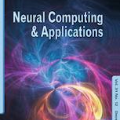Modeling the ability of multicellular organisms to build and maintain their bodies through local interactions between individual cells (morphogenesis) is a long-standing challenge of developmental biology. Recently, the Neural Cellular Automata (NCA) model was proposed as a way to find local system rules that produce a desired global behaviour, such as growing and persisting a predefined pattern, by repeatedly applying the same rule over a grid starting from a single cell. In this work we argue that the original Growing NCA model has an important limitation: anisotropy of the learned update rule. This implies the presence of an external factor that orients the cells in a particular direction. In other words, 'physical' rules of the underlying system are not invariant to rotation, thus prohibiting the existence of differently oriented instances of the target pattern on the same grid. We propose a modified Isotropic NCA model that does not have this limitation. We demonstrate that cell systems can be trained to grow accurate asymmetrical patterns through either of two methods: by breaking symmetries using structured seeds; or by introducing a rotation-reflection invariant training objective and relying on symmetry breaking caused by asynchronous cell updates.
翻译:通过个体细胞(形态形成)之间的局部互动模拟多细胞有机体建立和保持其身体的能力是发展生物学的长期挑战。最近,提出了神经细胞自动模型(NCA)模式,作为寻找产生理想全球行为的本地系统规则的一种方法,例如增长和持续预设模式,对从单个细胞开始的网格反复适用同样的规则。在这项工作中,我们争辩说,最初增长的NCA模式有一个重要的局限性:学习更新规则的厌食性。这意味着存在一个外在因素,使细胞朝特定方向运动。换句话说,基础系统中的“物理”规则不易旋转,从而禁止同一网格上存在目标模式不同方向的情况。我们提议一个没有这种限制的经修改的Isotropic NCA模型。我们证明,可以通过两种方法来训练细胞系统如何形成准确的不对称模式:利用结构化的种子打破对称;或采用旋转-反动的细胞内置培训目标,并依靠断裂的测算结果。




